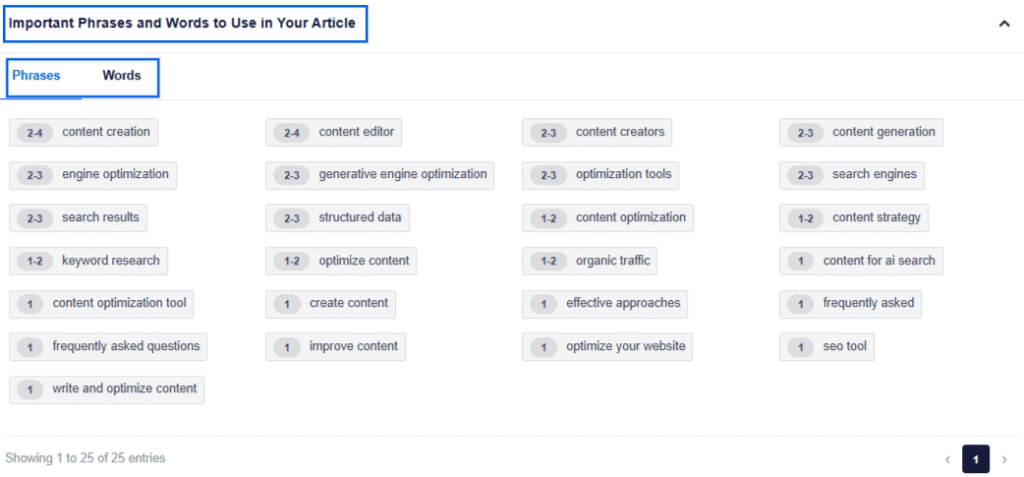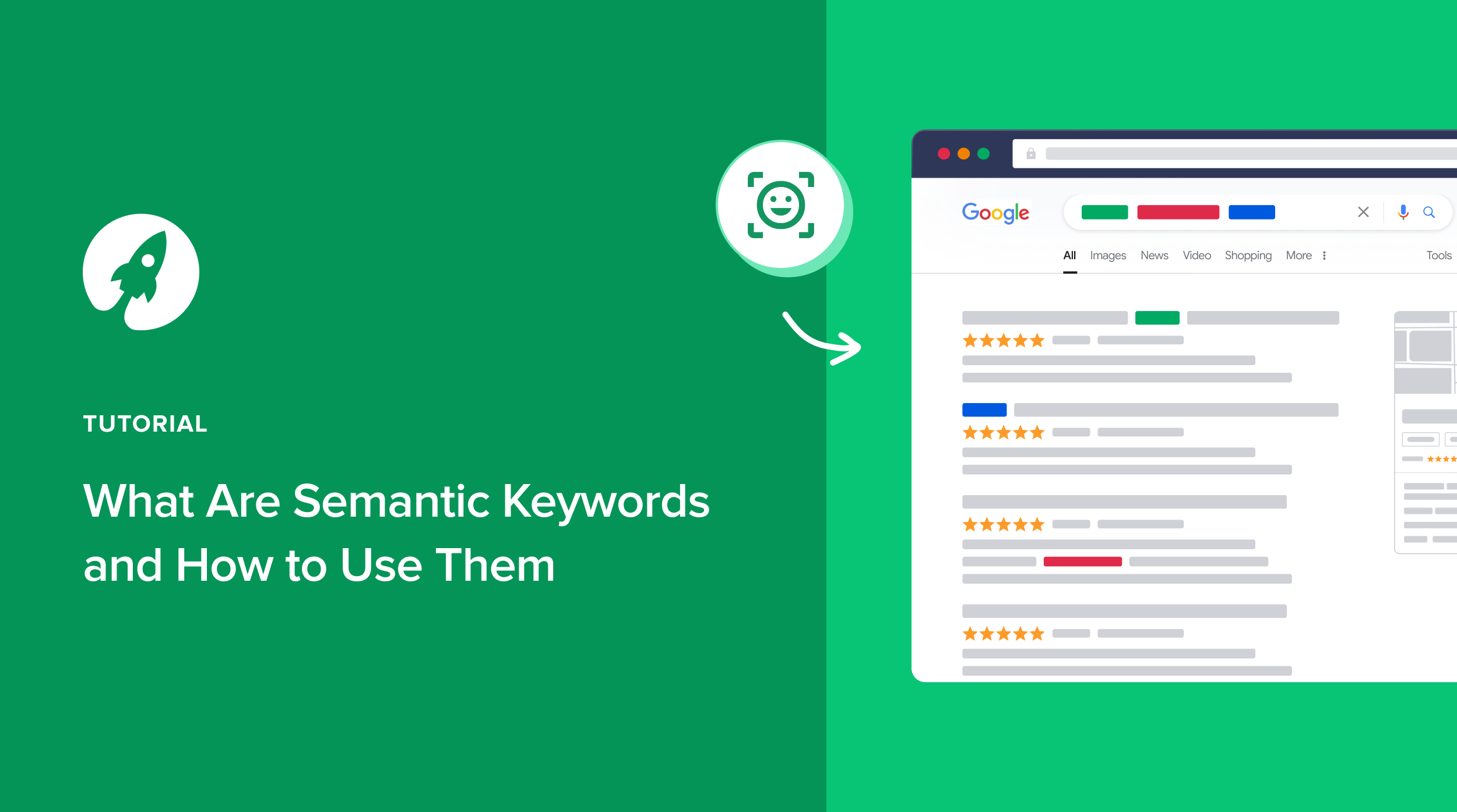When I first started optimizing content, I focused almost entirely on primary keywords. I’d pick a target phrase, sprinkle it throughout the article, and hope Google would notice. But over time, I realized that search engines were becoming much smarter, and they no longer just matched keywords but tried to understand meaning. That’s where semantic keywords came into play.
Semantic keywords are at the heart of modern SEO strategies.
They go beyond exact-match phrases and instead reflect related concepts, synonyms, and contextual terms that help search engines understand the full scope of your content.
In this guide, I’ll break down what latent semantic indexing keywords are, why they matter, and exactly how I use them in my own content workflows to improve relevance, depth, and ultimately rankings.
Let’s start with a definition.
What Are Semantic Keywords?
Semantic keywords are contextually related words or phrases that give additional meaning to your primary keyword. Instead of repeating your target phrase over and over, you use variations, synonyms, and related terms that naturally expand the topic.

For example:
- Primary keyword: “content marketing”
- Semantic keywords: “content strategy,” “blog promotion,” “lead generation,” “editorial calendar”
They help search engines recognize that your article truly covers the broader concept of content marketing in depth.
From my experience, this approach doesn’t just boost SEO; it makes your writing flow better, reduces keyword stuffing, and improves readability for users.
I’ve seen blog posts rank higher simply because they included a wider range of semantic variations that answered questions people were actually asking.
How Do They Differ From Traditional Keywords?
Traditional keyword strategy was once all about exact matches and repeating the target keyword enough times to signal relevance.
For example, if you wanted to rank for “SEO tools”, you’d insert that phrase into the title, H1, meta description, and body multiple times.
This worked years ago, but today it often feels robotic and can even trigger over-optimization penalties.
Semantic keywords flip this approach by focusing on meaning and context rather than repetition.
Here’s how they differ:
Boost Content Relevance
Semantic keywords allow me to write naturally while still signaling topic depth to search engines.
Instead of saying “best SEO tools” 20 times, I might use related terms like “keyword research platforms,” “on-page optimization software,” and “competitor analysis tools.”
This variation tells Google that my content fully explores the subject, not just one phrase.
Help With Natural Language Search
With the rise of voice search and conversational queries, users ask questions in a natural way. Semantic keywords align perfectly with this trend.
For instance, someone might search: “What’s the best tool to track SEO performance?”
If my content contains semantically related terms like “rank tracking,” “SEO monitoring tools,” and “analytics platforms,” it’s far more likely to surface.
Increase Content Depth
When I add semantic keywords, I’m not just ranking for one term. I’m broadening the scope of my content.
A blog on “email marketing” that also covers “automation workflows,” “A/B testing,” and “subscriber segmentation” goes deeper into the topic.
This improves my chances of ranking for multiple queries while positioning my article as a go-to resource.
Improve Keyword Variability
Traditional keywords risk making your content repetitive, while semantic ones bring variety and flow. They let me avoid keyword stuffing while still optimizing effectively.
Readers also benefit, and the content feels less forced and more natural.
So, while traditional keywords target search engines, semantic keywords serve both search engines and readers. They make content richer, easier to read, and more aligned with how modern search works.
5 Ways to Find Semantic Keywords
When I’m building a content strategy, finding semantic keywords is one of the most important steps.
Here’s how I usually do it:
1. Start With Your Primary Keyword
Every process begins with a seed keyword.
You can use keyword research tools like Semrush to find the primary keyword.

This will help you analyze the search volume, keyword difficulty, and even the search intent of the keyword.
Once you have a focus keyword, it gets easier to identify and add semantic variations that expand the scope of the piece.
After I’ve finalized the primary keyword, I plug that into SEOBoost’s Topic Reports.

With just one click, it generates 7 different types of reports associated with that keyword. This also includes a section for related secondary keywords.
This is where I look when selecting the semantic keywords for a blog.
What I like most about using Topic Reports is that it simplifies the research process for me. It also highlights keyword usage in places like outbound URL anchors or image alt text. This helps with keyword placement later.
2. Analyze the SERPs for Context
One of my favorite free tricks is to look directly at the search engine results page (SERP) for the target keyword.
Features like:
- People Also Ask boxes
- Related searches at the bottom
- Autocomplete suggestions
All reveal semantic phrases that Google associates with the topic.
By adding them to your content, you can increase the chances of your content ranking higher.
3. Study Competitor Content
I’ve always been a big fan of the proverb, “Keep your friends close and your enemies closer.” And as a content strategist, I try to live by that.
Looking at competitor content really helps (and often inspires) you to create high-quality content.
I often take the top-ranking articles for my keyword and skim through them.
What subtopics do they cover? What terms keep popping up?
When you do that, you’ll notice a keyword or topic pattern emerging in the top articles. This would help you create your own outline.
4. Use SEO Tools for Semantic Discovery
Manual research is helpful, but SEO tools really accelerate this step.
This is why I like using topic research tools like LowFruits and SEOBoost to surface hundreds of semantic connections I might miss on my own.
They pull from actual search queries, competitor data, and SERP patterns to show me the broader keyword universe.
5. Prioritize by Relevance and Intent
Not every semantic keyword is worth including if it doesn’t match the context of your article.
I usually filter based on:
- Relevance: Does this keyword actually support my primary topic?
- Intent: Is the query informational, commercial, or transactional?
- Content Fit: Can I naturally weave this into the structure without keyword stuffing?
This keeps my content focused while still broadening its reach.
SEO Tools I Use to Find Semantic Keywords
Now that you know how to find semantic keyword variations, let’s look at the tools I use and recommend.
SEOBoost’s Topic Reports
When I need semantic keyword ideas quickly, SEOBoost’s Topic Reports are my go-to.
Just plug in your target term, and it analyzes the SERP context, uncovering entities, related concepts, and topic clusters that your content can naturally include.

Pricing: Essential plan starts at $22.50/month (billed annually). You can also opt for the Team and Agency plan that offers more workspace capacity and unlimited usage in the highest plan.
LowFruits
If you want to spot low-competition, semantically rich long-tail opportunities, LowFruits is ideal.

It groups keywords by intent, analyzes competitor SERP features, and identifies hidden gems ideal for content expansion.
Pricing: LowFruits has a Pay-As-You-Go plan, which I really like because it gives you the room to explore and use at your own pace. Pay-as-you-go credits start at $25 for 2,000 credits.
Semrush
Semrush offers semantic insights through related keyword suggestions, topic research, and content optimization tools.

You can surface relevant variations that enrich topical breadth.
Pricing: Pro plan starts at $139.95/month, and you can also opt for a high-ticket plan based on your requirements.
How to Use Semantic Keywords in Your Content
Finding semantic keywords is only half the battle. The real results come when you strategically weave them into your content so they improve blog SEO without making your writing feel forced.
Over the years, I’ve developed a few methods that consistently work.
1. Strategic Placement
When I optimize content, I don’t just sprinkle semantic keywords randomly. I place them where they naturally enhance relevance:
- Headings (H2s, H3s): Using a semantic variation in a heading makes Google see that my content covers related aspects of the topic.
- Intro & Conclusion: Dropping variations early and late signals topical depth.
- Image Alt Text: Perfect for reinforcing related concepts without cluttering the main copy.
One tool that really helps me nail this is SEOBoost’s Content Optimization feature.

This editor-styled doc gives a real-time on-page SEO score to the content based on the recommendations to improve the score.
It flags missing semantic terms I didn’t think of, compares my coverage against competitors, and suggests where to integrate them.
This real-time feedback has saved me from under-optimized drafts more times than I can count.
2. Focus on Keyword Intent
Semantic keywords only work if they match what users want.
For instance, if my target keyword is “SEO audits”, I’ll use semantically related queries like “technical SEO checklist” and “on-page SEO review”. This helps cover informational intent while also signaling commercial relevance.
I’ve noticed that when I align semantic keywords with intent, users tend to stay longer as they find the content valuable.
3. Use in Content Structure
I also use semantic keywords to guide the flow of my content outline. Instead of listing them in a separate doc, I build them into my structure from the start.
For example:
- Primary keyword: “project management tools”
- Semantic variations: “team collaboration software,” “Trello vs Asana,” “task tracking apps”
By turning these into subtopics, the final blog can rank for dozens of variations.
This is why pillar pages and cluster strategies work so well; semantic keywords are the glue that holds them together.
Final Word
When I first started in SEO, I focused heavily on primary keywords, but over the years, I’ve learned that semantic keywords are what make content not only rank but resonate. They add depth, improve search engine understanding, and create a better experience for readers.
The best part? You don’t need to guess which semantic keywords to use.
Tools like SEOBoost’s Topic Reports surface them for you.
So, if you want your content to stay competitive, weaving semantic keywords into your strategy is essential.
Semantic Keyword FAQs
Semantic keywords are contextually related terms, synonyms, and variations that support your primary keyword. They help search engines better understand your content and improve its topical relevance.
If your primary keyword is “digital marketing,” semantic keywords might include “SEO,” “content strategy,” “social media campaigns,” or “lead generation.”




